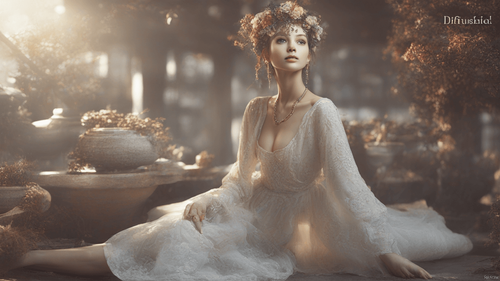
Introduction
In a world where technological advancements are reshaping industries at an unprecedented pace, AI scale image technology emerges as a game-changer. This innovative approach harnesses the capabilities of artificial intelligence to revolutionize how images are scaled, enhancing creativity, efficiency, and understanding across various domains. From artistic endeavors to scientific research, the integration of AI into image scaling has opened doors to new possibilities. In this comprehensive guide, we delve into the depths of AI scale image technology, exploring its benefits, applications, and potential impact on our digital landscape.
AI Scale Image: Redefining Visual Scaling
What is AI Scale Image?
AI scale image refers to the process of utilizing artificial intelligence algorithms to adjust the size and dimensions of images while preserving their quality and detail. Unlike traditional image resizing methods, AI scale image technology employs advanced techniques such as machine learning and deep neural networks to intelligently analyze and transform visual content.
How Does AI Scale Image Work?
At its core, AI scale image technology employs deep neural networks to learn patterns, textures, and features within images. Through a process known as convolution, these networks identify key elements and relationships, enabling them to upscale or downscale images while minimizing distortion. The use of AI ensures that the resulting images maintain their clarity and fidelity, even after significant adjustments.
The Role of Machine Learning in Image Scaling
Machine learning plays a pivotal role in AI scale image technology. By training neural networks on vast datasets of images, these models learn to make informed scaling decisions based on context, content, and visual aesthetics. This enables AI-powered algorithms to adapt and enhance image scaling techniques over time, continually improving their accuracy and output quality.
Benefits of AI Scale Image Technology
Preserving Visual Integrity:
AI scale image technology excels at maintaining the integrity of visual content during scaling. The intricate interplay of pixels and colors is preserved, ensuring that even minute details remain crisp and lifelike.
Efficiency and Time Savings:
Traditional image resizing methods often require manual adjustments and multiple iterations. AI scale image technology automates this process, significantly reducing the time and effort required to scale images while delivering superior results.
Enabling Creative Freedom:
Artists, designers, and content creators benefit from AI scale image technology's ability to seamlessly adapt images to various formats and dimensions. This empowers them to focus on their creative vision without being constrained by technical limitations.
Enhanced Analytical Insights:
In fields such as medical imaging and scientific research, AI scale image technology provides clearer, more detailed visuals, enabling professionals to extract accurate insights and make informed decisions.
Optimized User Experience:
Websites and applications that leverage AI scale image technology provide users with a smoother, more engaging experience. Images load faster and appear in optimal quality, enhancing user satisfaction.
Future-Proofing Visual Content:
As display technologies evolve, AI scale image technology ensures that images can be effortlessly adapted to varying screen sizes and resolutions, future-proofing visual content.
Applications Across Industries
Art and Design: Fostering Creativity with AI Scale Image
Elevating E-Commerce: Transforming Online Shopping Experiences
Medical Imaging: Revolutionizing Diagnostics and Treatment
Gaming and Entertainment: Immersive Visual Realism
Architectural Visualization: Envisioning Spaces in Detail
FAQs: Demystifying AI Scale Image
How does AI scale image technology differ from traditional image resizing methods?
AI scale image technology utilizes advanced algorithms and deep learning to analyze and adjust images, preserving quality and detail. Traditional resizing methods often result in pixelation and loss of clarity.
Can AI scale image technology be applied to video scaling as well?
Yes, AI scale image technology can be extended to video scaling, enabling the enhancement of video content while maintaining visual fidelity.
What types of images benefit the most from AI scaling?
Images with intricate details, fine textures, and complex patterns stand to benefit the most from AI scaling, as the technology ensures that these elements remain sharp and well-defined.
Does AI scale image technology require significant computational resources?
While AI scale image technology is computationally intensive, advancements in hardware acceleration and cloud computing have made it more accessible and efficient.
Is AI scale image technology accessible to individual artists and creators?
Yes, AI scale image technology is becoming increasingly accessible, with various software tools and platforms offering user-friendly solutions for artists and creators.
Can AI scale image technology be customized for specific scaling preferences?
Absolutely, AI scale image technology often allows for customization based on user preferences, ensuring that the scaled images align with the creator's artistic or functional vision.
Conclusion
In the dynamic landscape of technological innovation, AI scale image technology emerges as a beacon of transformative potential. By harnessing the power of artificial intelligence, we've unlocked a new realm of possibilities in image scaling, fostering creativity, efficiency, and understanding across diverse domains. From art and design to medical diagnostics, AI scale image technology is reshaping industries and redefining our relationship with visual content. As this technology continues to evolve and mature, its influence will only expand, paving the way for a future where images seamlessly adapt to our ever-changing digital landscape.
Experience the future of visual scaling with Picasso AI's cutting-edge AI scale image technology. Revolutionize your creative process and explore new dimensions in visual content. Learn more at picassoai.com.
Disclaimer: This article is for informational purposes only and does not constitute professional advice.